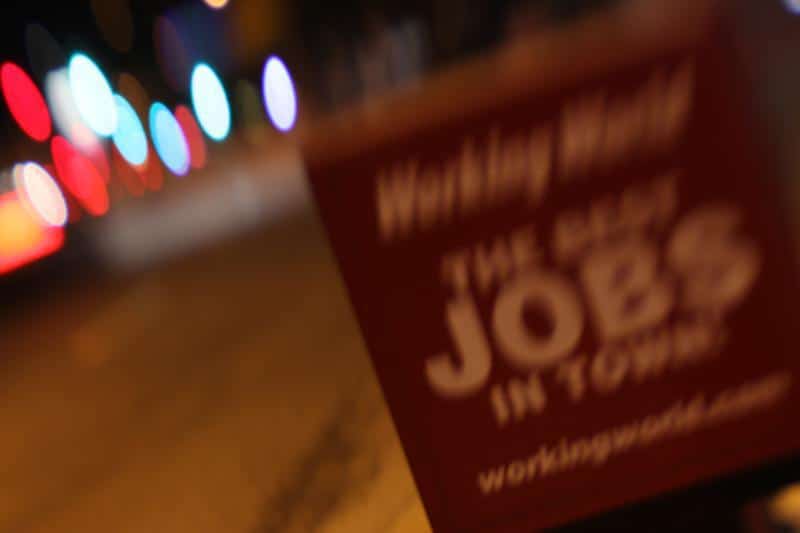In this edition of our Race, Jobs, and the Economy series decoding each month’s Bureau of Labor Statistics (BLS) monthly jobs report, we overview the current state of the labor market.
Analysis of Topline Figures in the July BLS Report
The economy added 114,000 jobs in July, a remarkable slowdown from the 12-month average of 215,000. The July jobs gains were also more concentrated than usual. The diffusion index, a measure of how widely spread job gains are throughout the economy, dipped below 50 for the first time since the start of the pandemic, indicating that there were more industries losing jobs than gaining them.
The industries with the largest job gains were: healthcare (+55,000), construction (+25,000), government (+17,000), and transportation and warehousing (+14,000). Construction has remained surprisingly strong considering rising costs and the industry’s high sensitivity to interest rates, which are still near historic highs. In fact, after private education and health services, construction has produced the second-highest number of private sector jobs over the last 12 months.
Additionally, the government has increasingly been an important backstop to the labor market. If we exclude the public sector, the economy added a dismal 97,000 jobs in July, below the three-month average of 146,000. Declining private sector job creation is a worrying trend that signals weaknesses in the labor market.
The unemployment rate rose in July from 4.1% to 4.3%, the highest level since October 2021. The majority of the rise was due to an increase in people entering the labor force but unable to find work. Recent increases in the rate – whether the 0.2 percentage point increase last month or the increases over the last 3, 6, or 12 months – have all been statistically significant.
Perhaps the most widely reported aspect of the report was that it triggered what’s called the Sahm Rule, which holds that a recession may be imminent when the unemployment rate rises a half-percentage point too quickly. This was likely part of what prompted the global sell-off in financial markets over the weekend following the report’s release.
The originator of the rule, Claudia Sahm, however, believes that we are not in immediate danger of a recession because consumer spending and job gains have been solid. Since the July jobs report and subsequent market shock, other, positive indicators suggest Sahm may be right to doubt her own rule at this time. Retail sales data came in stronger than expected, inflation slowed, and the number of people filing new unemployment insurance claims dropped.
Nevertheless, many have complained that the Federal Reserve has not been proactive enough in cutting rates which they say could have avoided the (minor) panic.
Job Shifts By Race
Though the overall Black unemployment rate was unchanged in July from June, the Black male unemployment rate increased from 6.1% to 6.6%, the highest level since the start of 2022. Although monthly changes can be erratic, the rate has remained elevated now for several months. However, in a welcoming sign, Black men are increasingly participating in the labor force at a rate approaching their pre-Great Recession levels.
The unemployment rate for Hispanic women has risen to its highest level since early 2022. However, it should be noted that the figures are erratic because the Hispanic data by sex is not seasonally adjusted. Additionally, the overall Hispanic unemployment rate remains near historic lows.
Interestingly the White unemployment rate has drifted upward to levels not seen since mid-2021. Similar to the overall unemployment rate, the 0.6 percentage point increase over the last 12 months has been statistically significant. The overall male unemployment rate has also drifted upward over the last several months.
Data released at the end of July showed that job openings were largely unchanged but continued the long-term decline to pre-pandemic levels. Hiring fell quite dramatically to its lowest level since March 2020 at the start of the pandemic.
As a consolation prize, layoffs have remained largely unchanged, meaning workers with jobs have been able to keep them even though fewer workers are getting new ones. Furthermore, the ratio of unemployed people to job openings has remained at its pre-pandemic low for the last 5 months.
We previously mentioned the long-term decline in job creation and the latest quarterly data for Q4 of 2023 confirms this trend: While the 201,000 jobs created in Q4 reversed a worrisome contraction from the prior quarter, 2023 ended with private sector jobs slowing considerably. A bright spot is that establishment births, a close proxy to new businesses, have remained well above pre-pandemic levels throughout 2022 and 2023, indicating that despite rising costs, business formation has remained robust.
Taken together, the recent releases from the BLS paint a picture of an economy approaching a sort of crossroads. As the minor panic that followed the July jobs data release has subsided many wonder if we are headed toward a recession.
Others believe the economy remains robust with the recent slowdown being a return to its long-term normal functioning. Households, too, seem to be of two minds: The consumer confidence survey for July found many are concerned about the present situation even though they still remain upbeat about their own future prospects.
The Federal Reserve believes recent labor market weaknesses may give rise to a cut in interest rates however officials remain confident that the economy is not “falling off a cliff.” In July, inflation dipped below 3% for the first time since early 2021, further increasing the likelihood of a rate cut. Nevertheless, August’s jobs report will be closely watched to see if present trends continue.
Joseph Dean is NCRC's Racial Economic Junior Research Specialist.
Photo by Renee Silverman via Flickr.



